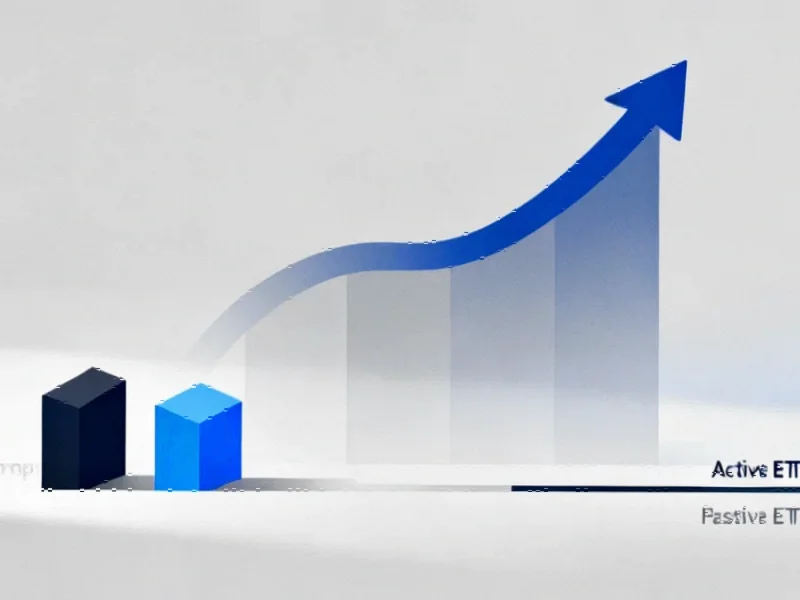Strategic Expansion into Active ETF Market
Two of Britain’s largest asset management firms, Royal London Asset Management and M&G Investments, are making strategic moves to enter Europe’s rapidly expanding active exchange-traded fund (ETF) market. This development comes as the traditional mutual fund sector faces increasing fee pressure and investors seek more flexible, cost-effective investment vehicles. The entry of these established players signals a significant shift in the European investment landscape as major UK asset managers recognize the growing importance of active ETFs in portfolio construction.
Royal London’s Ambitious European Plans
Hans Georgeson, chief executive of Royal London Asset Management, revealed the firm’s comprehensive strategy for European expansion, including establishing a Dublin office within the next 18 months. This move will support the £184 billion group’s international growth objectives and facilitate their entry into the active ETF space. “The active ETF market is moving very fast,” Georgeson stated, emphasizing the company’s ambitious goal to rank among the top 10 players in this competitive sector. The firm plans to launch both equity and fixed income products, recognizing ETFs as a crucial vehicle for international market access.
This strategic direction reflects broader market trends where traditional asset managers are adapting to changing investor preferences. The flexibility and accessibility of ETFs provide distinct advantages over conventional mutual funds, particularly for international investors seeking exposure to specific markets or sectors.
M&G’s Imminent ETF Launch
M&G Investments is preparing to introduce its first active ETFs within weeks, focusing initially on UK government bonds and US Treasuries. Neil Godfrey, global head of client group at M&G Investments, highlighted how these products will open new investor segments while strengthening relationships with existing clients. “Given many clients already use and have familiarity with ETFs, we see a natural evolution toward active solutions,” Godfrey explained, noting the potential for expanded partnerships across the UK, Europe, and Asia.
The timing of these launches coincides with significant industry developments in financial product innovation and regulatory frameworks. As asset managers navigate this evolving landscape, the ability to offer sophisticated investment solutions through efficient structures becomes increasingly important.
European Active ETF Market Growth
According to recent analysis from Goldman Sachs’ fund division, Europe’s active ETF industry has experienced remarkable expansion, with assets under management growing nearly sevenfold since 2019 to reach €68.6 billion. The number of funds and providers has followed a similar trajectory, with active ETF launches outpacing passive alternatives for the first time. This growth reflects changing investor preferences and the evolving competitive dynamics within the fund management industry.
This rapid expansion parallels related innovations occurring across financial markets, where technological advancements and regulatory changes are creating new opportunities for product development and distribution.
Competitive Landscape Intensifies
The entry of Royal London and M&G follows similar moves by other traditional fund groups earlier this year. Schroders unveiled its first active ETFs in Europe last month, focusing on global equities and high-quality corporate bonds. Johanna Kyrklund, Schroders group chief investment officer, emphasized how these products combine the “flexibility and accessibility” of ETFs with the potential for active management to generate superior returns.
Jupiter also entered the sector at the beginning of the year with a global government bond active ETF. Matthew Beesley, chief executive of Jupiter, articulated the strategic imperative driving these moves: “The risk is that if you sit there and don’t do anything, ETFs will continue to cannibalize the assets held in traditional funds.”
This competitive dynamic reflects the broader transformation occurring across financial services, where recent technology and changing investor expectations are reshaping product offerings and distribution channels.
Structural Advantages of Active ETFs
Active ETFs provide fund managers with the opportunity to outperform market indices while operating within a structure that offers lower costs and greater liquidity than traditional mutual funds. Unlike passive ETFs that simply track an index, active ETFs enable managers to apply their investment expertise while providing investors with intraday pricing and trading flexibility. This combination of active management with the structural benefits of ETFs represents a significant evolution in investment product design.
The structural efficiency of ETFs aligns with ongoing corporate reporting reform initiatives that emphasize transparency, cost efficiency, and investor accessibility. As regulatory frameworks continue to evolve, the advantages of ETF structures become increasingly apparent to both asset managers and investors.
Future Implications for Asset Management
The strategic moves by Royal London and M&G signal a broader transformation within the asset management industry. As traditional mutual funds face ongoing fee pressure and outflows, active ETFs represent a growth opportunity for established managers. The ability to offer actively managed strategies within an ETF wrapper provides a compelling value proposition for investors seeking both expertise and structural efficiency.
This industry transformation reflects the continuous innovation occurring across financial markets, where established players must adapt to maintain competitiveness. The success of these initiatives will depend on the ability to deliver consistent performance while leveraging the structural benefits that ETFs provide to investors across multiple jurisdictions.
This article aggregates information from publicly available sources. All trademarks and copyrights belong to their respective owners.
Note: Featured image is for illustrative purposes only and does not represent any specific product, service, or entity mentioned in this article.



